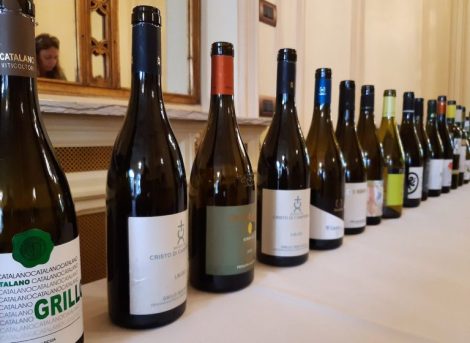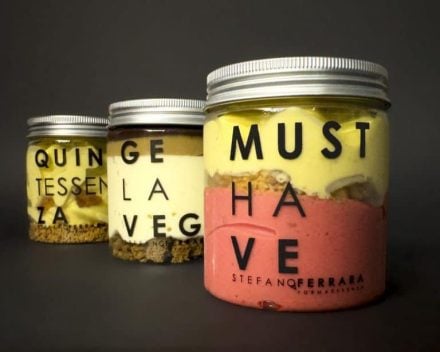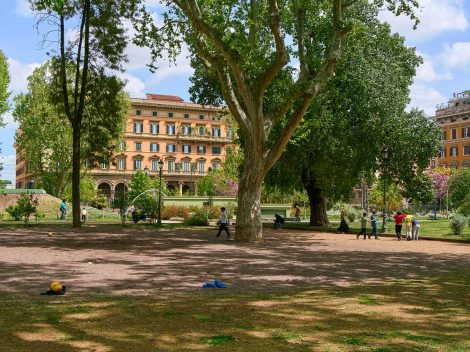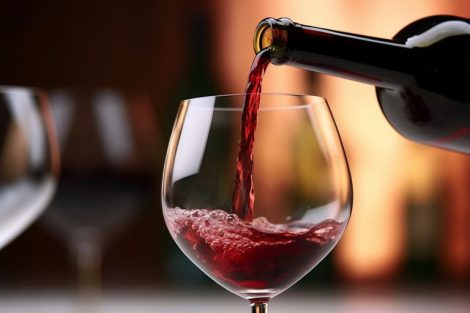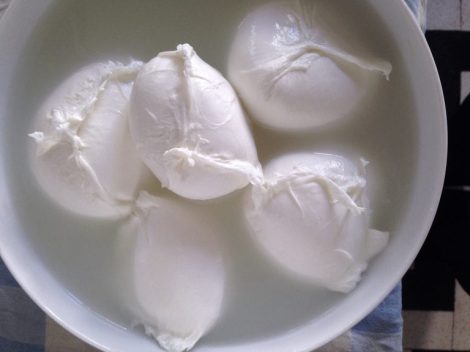For centuries, the natural workings of Etna have created a unique environment for landscape and viticulture. Consider the altitude – since here grapes grow at over a thousand meters above sea level – and think about the soil and subsoil suited for growing certain great varieties. Remember the specific microclimate, with its powerful
History
All this has deep roots and affected the regulations written for the first time in 1968 and modified only a few years ago. But to explain the fuller meaning of the Etna DOC, at the end of the 1960s experts looked at a text from the end of the 16thcentury, Storia dei Vini d’Italia. There the volcanic wines were described as products “whose goodness is attributed to the ashes of Etna.” This – but not only this – determines what can be defined as great territorial winegrowing. The soil is igneous, in some zones stony, and in others sandy or ashy. Some vineyards are planted with ungrafted alberello etneo vines, which naturally produce small quantities but very high quality grapes: these plants can be a century old, or more. There are several traditional varieties: nerello mascalese is the most important for reds, followed by nerello cappuccio, which can account for a maximum of 20% of a blend. For whites, the carricante grape is the most typical, but catarratto can be used, for a maximum of 40%, but only 20% for the Etna Bianco Superiore. Perfect ripening of the vines in this area is guaranteed by the unique climate. Although this is southernmost Italy, its altitude is among Europe’s highest for grape growing – some of it over 1,000 meters above sea level.
Production areas are divided into contrade. On the northern slope, red-berried grapes dominate the vineyards, and the municipalities of Castiglione di Sicilia and Randazzo are the key zones.
Salvo Foti
The whites are more common on the east, especially in the municipality of Milo, the only area where the Superiore category can be produced. To all this, add the work of growers. Consider not only the sum total of the cellar techniques of each single winemaker, but rather the entire heritage of experiences that start with the vine, are passed along from parent to child and make up the social texture of an entire community.Salvo Foti, a great enologist and Etna guru, has clear ideas on this matter. In 2000, he led the project I Vigneri, a name which derives from the ancient Maestranza dei Vigneri, an association of grapegrowers formed in Catania in 1435. “Fifteen years ago, talk about non-native species and upgrades, about mechanization, began growing. Although everyone continued saying that ‘wine is made in the vineyard’, the truth was that the work in the vineyard was no longer considered important. With I Vigneri,” said Foti, “we began with a model that put people at the center of everything. It was a social project that took a step backwards and started with the work in the countryside. I began together with two growers who worked with my father.
Vigneri
Now there are thirty of us. Vigneri means cultivating the alberello etneo training system, building dry walls, not irrigating, and only using systems that are compatible with the environmental care of the vineyard. It means, therefore, cultivating a landscape, not only a vineyard, protecting it and gifting it to future generations. You don’t make wine to put a particular label on the market, but to transfer an entire territory into a bottle, starting with the people that cared for that territory.” But if we had to define the wines that I Vigneri produces? “Today people use many adjectives to describe and sell wines,” the enologist commented. “But we make human wines. It doesn’t matter if they cost a few euros more. There are thousands of hours of work per hectare every year that go into it and professional care that protects a territory for the next generations.”
The project
Now the I Vigneri project has moved down from Etna and spread to nearby zones – Lipari, Pachino, Pantelleria and even to California. Many winemakers ask Salvo Foti for advice and many emulate his work. To see the new vineyards planted alberello style, to see dry walls around the plots, and see indigenous rather than non-native grapes planted everywhere is a proof of his influence. If you travel around the contrade and taste the wines grown there, you see that they are more and more truly the children of the volcano. Even with their genuine imperfections, they are the true witnesses of an ancient grapegrowing territory and the people who live there.
Etna| Wineries & Wines
Alta Mora – Cusumano | Castiglione di Sicilia | contrada Verzella |
tel. 091 8908713 | www.altamora.it
Within fifteen years, Alberto and Diego Cusumano, with impeccable mastery, have affirmed their winery both qualitatively and commercially, and built an important international presence as well. Headquarters are in Partinico, while vineyards are located in eight different areas, including Piana degli Albanesi, Monreale, Butera and Pachino. Some years ago, they added the beautiful Alta Mora location on Etna, with 20 hectares in the excellent wine-growing zones of Guardiola, Verzella, Porcaria and Pietramarina. Their avant-garde winemaking facilities can produce modern wines of a precise and clean style that expresses their particular Etna terroir. Production is at about 50,000 bottles, but growing. The various labels include an Etna Bianco, Etna Rosso and single crus.
Etna Bianco ’13 | 13€
From mono-varietal carricante grapes grown at 600 meters above sea level, trellis-style, in the Praino-Milo and Verzella-Castiglione di Sicilia zones. Vinified in stainless steel, three years after the harvest it still shows all the vitality and energy of a young wine with notes of candied citrus fruit and yellow flowers dominating a fascinating and multi-faceted nose. The mouth is taut, fresh and deep. Minerality emerges, as expected, and the finish is long and clean.
Etna Rosso ’13 |15€
From mono-varietal nerello mascalese grapes grown in the contradas of Verzella, Pietramarina, Feudo di Mezzo and Solicchiata at altitudes of 600 to 800 meters. Aromas of ripe red fruit, sweet spices and flowers. The mouth is pleasant, modern, deep and creamy, delineated by balsamic freshness that makes for a long, elegant mouth-feel. Good structure, caressing tannin, soft, mouth-filling, with a very clean aroma.
Benanti | Viagrande (CT) | via Garibaldi, 361 | tel. 095 7893399 | www.vinicolabenanti.it
Benanti ranks at the top of Etna’s viticulture world and it is all due to Giuseppe Benanti. He believed deeply in this territory and today, thanks to the help of his sons Antonio and Salvino, carries on work begun at the end of the 1980s. His land now amounts to 45 hectares, all in the most desirable areas, including Guardiola, Verzella, Porcaria and Pietramarina. Credit is also due to Benanti’s faith in the then very young enologist, Salvo Foti, who was already working in the winery during the very first harvests. Today the enologist in charge is Vincenzo Calì. The work of many years can be felt when tasting the oldest vintages of Pietramarina, Rovitello or Serra della Contessa, true pearls of Etna, capable of aging to perfection and continuing, over time, to offer all the qualities that the volcanic territory embodies.
Etna Bianco Sup. Pietramarina ’11 39€
Monovarietal carricante grapes, grown alberello-style at 950 meters above sea level in the Caselle contrada. It is premium Etna wine. Released after four years of aging, it maintains over time all the character of Etna’s wines: aromas of orange blossom, candied lemon and helichrysum flowers. The palate is taut, vibrant and at the same time rich in body and structure. Excellent drinkability thanks to balsamic freshness. Long, clean, full-flavored finish.
Etna Rosso Serra della Contessa ’11 | 35€
From nerello mascalese grapes (80%) with some nerello cappuccio added, grown on Monte Serra at 500 meters above sea level. Very old vines, over a hundred years old, some of which are ungrafted indigenous originals. It is a wine of enormous complexity, which emerges in notes of spices, currants, cherries, a touch of resin, tobacco and underbrush. The palate is deep, very fresh, easy to drink, with soft, silky tannin. The finish is balsamic, clean and long.
Calcagno | Randazzo (CT) | via Galliano, 51/a | tel. 338 7772780 | www.vinicalcagno.it
Calcagno is a small artisanal winery founded and managed by two brothers, Gianni and Franco. The first release was in 2006 and now production is at about 20,000 bottles. They produce four labels – a white, a rosé, and two reds that are crus, Feudo di Mezzo and Arcurìa. In all, there are three beautiful hectares around the winery itself, on the northern slope in one of the best wine-growing zones. The land is about 650 meters above sea level and the vines are, on the average, about eighty years old. The principal work is in the vineyard, using only animal fertilizer, copper, sulfur and a great deal of hand labor, but no chemical products. The resulting wines are artisanal, true children of their territory and their vintage year, with all the inevitable minor but fascinating imprecision that nature provides.
Etna Rosso Feudo di Mezzo ’12 | 19€
Made from nerello mascalese grapes with a small addition of nerello cappuccio. The wine is from the contrada Feudo di Mezzo from which it takes its name. It is an authentic cru from very old alberello vines, whose age ranges from seventy to ninety years. The aromas are balsamic, earthy, volcanic and spicy, fully expressing the production zone. The palate is taut, sharp, sometimes hard and edgy, with full structure and evident, pointed tannin. The finish is very long, fresh and vibrant.
Etna Rosso Arcuria ’12 | 19€
The same blend, labor and vinification as the Feudo di Mezzo label, but this wine comes from the Arcuria contrada. Fruity sensations prevail on the nose, with wild strawberries and currants appearing before notes of sweet spices and flowers. The palate is full and compact, with soft tannin and a mouth-filling and silky feel. The aromas on the nose return on the finish, with acidity that manages to push the wine along, leaving a fresh and clean sensation.
Duca di Salaparuta | Castiglione di Sicilia (CT) | fraz. Solicchiata | ss 120 km 195 | tel. 091 945201 | www.duca.it
Duca di Salaparuta is one of Sicily’s best-known brand names, both in Italy and around the world. Founded at the start of the 19thcentury, today it covers 120 hectares, plus other rented vineyards, and produces about nine million bottles. In 2001 it was purchased by Ilva di Saronno and in fifteen years, a great deal of potential was developed through entrepreneurial logic that was innovative and respectful of the different historical and territorial backgrounds of the three celebrated brands – Florio, Corvo and Duca di Salaparuta. On Etna, Tenuta Vajasindi turns out unique wines from terraced vineyards at 600-700 meters above sea level. In the winery museum, visitors can see the fascinating old palmento, where wine was once made. Besides the native nerello mascalese grapes, pinot nero has always been grown, the mono-varietal featured in Nawàri.
Vajasindi Làvico ’12 | 12€
From monovarietal nerrello mascalese, grown in the Vajasindi estate, on alberello vines at 600-880 meters above sea level. On the nose, fragrance and vitality, with fruity notes above all. Blackberry, cherry, dried flowers and a spicy touch lead into a soft and silky palate well-balanced by ripe tannin and fresh balsamic tones that enliven the mouth. Long, clean finish.
Vajasindi Nawàri ’12 | 29€
Made from monovarietal pinot nero, traditionally grown in this Etna winery, a wine with fragrances of blackberry, currant, wild strawberry and sweet spices. Notes of dried flowers and a light balsamic sensation that leads into a slim palate with delicate tannin that develops lightly. Slightly bitter, very fresh finish.
Girolamo Russo | Castiglione di Sicilia (CT) | fraz. Passopisciaro |
via Regina Margherita, 78 | tel. +39.328.3840247 | www.girolamorusso.it
Girolamo Russo is an agricultural estate active on Etna since the 1940s but ten years ago, by bottling their wine, their business policy changed radically. The credit goes to Giuseppe Russo, a modest, capable and passionate grapegrower who, within a few years, brought the Russo estate to the top of the volcano’s production rankings, with many labels that fully represent their terroir of origin. The wines are very elegant, drink beautifully, and are never overly simple or banal but very artisanal and sincere in the best meaning of the term. The vineyards are between Passopisciaro and Randazzo: twelve hectares in San Lorenzo, six in Feudo and one in Feudo di Mezzo. Three crus of Etna Rosso join ‘A Rina’, plus a rosé and a white, all the result of immense work in the vineyard, with no synthetic products used, and labor aimed only at enhancing the characteristics that nature provides.
Etna Rosso Feudo di Mezzo ’13 | 35€
A real cru from the contrada of the same name, with about 1,000 bottles produced. It is made from nerello mascalese, with a very small percentage of cappuccio added. The nose displays berry notes, spices, dried flowers and hints of underbrush and tobacco. In the mouth it is creamy, with light and vital balsamic freshness. Tannin is mature, and acidity accompanies the mouthfeel for a clean and elegant finish.
Etna Rosso San Lorenzo ’13| 35€
The same varieties as those of Feudo di Mezzo, and here too the vineyards grow in the contrada of the same name, twelve hectares of vineyard at 700-800 meters above sea level. Some vines are over a century old and thrust their roots into the entire volcanic substrata. Aromas display red fruit and medicinal herbs, followed by hints of dried roses, Mediterranean scrub and resin. The palate is balanced and seductive, fresh and very long.
Graci | fraz. Passopisciaro | Castiglione di Sicilia (CT) |
c.da Arcuria | tel. 348 7016773 | www.graci.eu
With eighteen hectares of vineyard in the Arcuria contrada on the northern slope, this winery has a patrimony of vines some of which are a century old. The winery itself is an ancient structure, rebuilt respectfully, which holds an 18thcentury palmento, or winemaking facility. Owner Alberto Graci uses only indigenous yeasts, large casks for aging his wines, casks in cement and only natural interventions in the vineyard. The result is evident in his wines, which are elegant and sincere, wonderfully balanced and deep. The winery’s premium label is Quota 1000, named for the altitude of its vines. Located in Barbabecchi contrada, it is outside the Etna Rosso regulatory zone, but it is one of the most fascinating wines we tasted in the area. The other wines come from celebrated contrade: Arcuria, Feudo di Mezzo, Moganazzi and Santo Spirito.
Etna Rosso Arcurìa ’13| 30€
From an ancient vineyard in the contrada of the same name, this is a great Etna red, produced exclusively from nerello mascalese grapes. Arcuria 2013 is made with indigenous yeasts. Fermentation takes place in oak barrels, and aging in large casks. Aromas display all the essence of the volcano, with earth and balsamic notes evident. A fruity tone precedes a savory mouth with caressing tannin. Very long in flavor, aromatic cleanliness and freshness.
Etna Bianco Arcurìa ’13| 24€
A white produced on the northern slope, an area mostly dedicated to reds. It is made from carricante grapes grown in the Arcuria contrada, in a two-and-a-half-hectare vineyard located at 600 meters above sea level. The 2013 vintage displays aromas of orange blossom and candied citrus fruit, with a touch of saffron and acacia flowers. The mouth is vibrant with fresh acidity, flavorful and Mediterranean, rich in vitality. Very savory and clean finish.
I Custodi delle Vigne dell’Etna | fraz. Solicchiata | Castiglione di Sicilia (CT) | c.da Moganazzi | tel. 095 374418 | www.icustodi.it
The Custodi delle Vigne dell’Etna is a small but very beautiful winery that is part of Salvo Foti’s I Vigneri consortium. Founded in 2007 and run by Mario Paoluzzi, it can draw on a little more than twelve hectares and produces about 40,000 bottles. The viticulture is absolutely artisanal, with vinification that observes the rules of organic winemaking. Two labels are produced, a rosé and a white. The vineyards are planted in the alberello etneo system, terracing is in volcanic stone, chestnut wood poles hold up the vines, and dry walls do their job. The unique landscape shows up fully when tasting the wines.
Etna Bianco Ante ’13| 25€
A white made from mostly carricante grapes with some addition of minnella and grecanico. Alberello planting only, vines grow between 900 and 1200 meters above sea level. Vinification is in stainless steel. The result is surprising for its olfactory complexity, which ranges from notes of anise to hints of dried flowers and spices. The palate is savory, fresh and vital. The olfactory sensations return, the finish is deep and brings notes of iodine.
Etna Rosato Alnus ’13| 18€
From the younger vineyards comes a rosé that represents Etna’s winegrowing history. Made from nerello mascalese with some cappuccio, it has aromas of fine spices, flowers, and berries. The palate is truly surprising. Agile and energetic thanks to the acidity found in the best whites, it attains good body and structure as it develops. On the finish, light tannin presses the palate deeply, giving mouth-filling flavor.
I Vigneri | Milo (CT) | via Abate, 3 | tel. 366 6622591 | www.ivigneri.it
I Vigneri is one of the most beautiful and fascinating wineries on Etna. It isn’t only a simple winery but a real project that aims to safeguard the landscape and the people who inhabit it. The idea and its creation come from Salvo Foti, an enologist of great experience, whose knowledge of Etna’s viticulture is unmatched. The name (derived from the ancient guild of the Vigneri established in Catania in 1435) belongs to this winery, but also to a consortium of others that follow the agricultural and winegrowing rules established by Foti. It is all aimed at defending the alberello etneo vine-training method, the environment of the volcano, the traditional dry walls. These together contribute to producing fascinating wines with silky textures and lively character. Some vines are more than 100 years old and are at significant altitudes, around 1,000 meters above sea level. The labels are many. Vigna di Milo is a carricante that comes from a century-old vineyard on the eastern slope, Vinupetra is a wine from nerello mascalese, cappucio, alicante and francisi grown in Passopisciaro, northern slope. Then there’s Vinudilice, a rosé from a vineyard growing 1,300 meters above sea level.
Etna Bianco Vigna di Milo ’13 | 35€
Vigna di Milo comes from an area 900 meters above sea level on the eastern slope, and is made solely with carricante grapes grown alberello-style. This is a white of incredible olfactory complexity, starting with notes of yellow flowers and sensations of mountain herbs, then moving to hints of saffron and candied oranges. The palate is agile, vital and flavorful, with sensations of iodine on the finish.
Etna Rosso Vinupetra ’12| 42€
Vinupetra is one of those reds that symbolizes Etna’s winegrowing history. It is made from nerello mascalese with a touch of cappuccio, alicante and francisi. These latter varieties are less common, but are naturally and historically present in the centuries-old vineyards of the northern slope. On the nose, spicy, earthy and underbrush notes prevail, while the palate is rich and creamy but softened by balsamic acidity and by flavor that makes for a deep and fascinating mouthful.
Palmento Costanzo | Castiglione di Sicilia (CT) | c.da Santo Spirito | tel. 0942 983349 | www.palmentosantospirito.com
Palmento Costanzo is a fine example of the renovation of an old palmento or winemaking facility and the dozen or so hectares of vineyard growing around it. The credit goes to Mimmo and Valeria Costanzo. They wanted to undertake a project connected to wine that benefited the landscape. This is Contrada Santo Spirito in Passopisciaro. The terracing that stretches to the winery is breathtaking. The architects wanted to leave the Palmento intact, while it intersects with the modernity of a newly-built winery. The wooden, egg-shaped barrels complete the picture. Among the wines tasted, the Nero di Sei and Bianco di Sei selections stand out. Their names refer to the volcano, the sixth Sicilian site on the Unesco World Heritage List.
Etna Bianco ’14| 14€
Made with carricante grapes grown in the Santo Spirito contrada, the wine is direct and sincere, characterized by notes of white flowers, citrus fruit, and a touch of Mediterranean herbs. The palate is savory and fresh, with marked acidity, but linked to rich and assertive but never heavy substance. A very clean finish with the sensations found on the nose emerging clearly.
Etna Rosso Nero di Sei ’12| 20 €
Made from nerello mascalese grapes with some nerello cappuccio, grown on the old terraced vineyards in Santo Spirito contrada. Fermentation is spontaneous. Aging is in oak barriques, giving a complex red with a modern feel that doesn’t lose the genuine sensations of the territory. The nose offers aromas of forest floor and blackberries while the mouth is savory and very fresh.
Scammacca del Murgo | Santa Venerina (CT) | via Zafferana, 13 | tel. 095 950520 | www.murgo.it
Thirty hectares located on the eastern slope are almost all dedicated to the Etna DOC. The story began at the beginning of the 1980s, when Baron Emmanuele Scammacca del Murgo decided to transform his properties into agricultural businesses. Now his sons, Michele, Pietro and Matteo look after the estate, which also includes a beautiful agriturismo with fifteen rooms. The first Etna Rosso was bottled in 1982, and this was one of the first estates to do so; in 1990, the first metodo classic spumante was released. Since then it has been a strong point in the production line-up. Among the still wines, the most interesting belong to the Tenuta San Michele line, and are made only in the best vintage years and from the best vineyard properties. The spumanti are produced from nerello mascalese and enjoy a very long stay on their lees.
Extra Brut ’08| 25€
Scammacca del Murgo is well-known for making quality spumante, and this Extra Brut shows why. After four years on its lees, with zero dosage (no added sugar), this spumante has floral and citrus notes on the nose, along with hints of bread crust. The palate is fresh, delicate, slim and deep, with balanced, creamy and clean bubbles.
Etna Bianco Tenuta San Michele ’14 | 20€
The Tenuta San Michele Etna Bianco is a white made from carricante grapes grown in the vineyard of the same name. Careful selection of the bunches brings us a wine that is very precise and clean on the nose, with notes of yellow flowers and aromatic herbs. Fresh and savory in the mouth, it has a long, clean and slightly iodized finish.
Terrazze dell'Etna | randazzo (CT) | loc. Bocca d’Orzo | tel. 328 6175952 | www.terrazzedelletna.it
Terrazze dell’Etna is a young, ambitious project led by an engineer, Nino Bevilacqua, assisted by his daughter Alessia. Thirty-six hectares of vineyard are in the heart of the Etna natural park in the Randazzo municipality. The project led to the purchase of many small parcels, some of them abandoned, in order to obtain terraced vineyards between 700 and 800 meters above sea level. Production is supervised by enologist Riccardo Cotarella. Many wines are produced, all well-made and modern in style, although faithful to their territory of origin. Emphasis is on nerello mascalese, vinified on its own, in blends with nerello cappuccio or with international varieties, as well as a version “in bianco”. On the spumante front, we noted the Rosé made from nerello and the Brut from chardonnay grapes.
Etna Rosso Cirneco ’12| 30€
Cirneco ’12, a mono-varietal nerello mascalese, is a modern, complex wine with notes of berries, currants and blackberries, slight hints of sweet spices and Mediterranean scrub. In the mouth, it shows its structure, but the body is well balanced between softness, sharp but never invasive tannin, and balsamic freshness that sustains each mouthful. A long, clean finish with excellent flavor.
Cuvée Brut Rosé| 22€
Metodo classic sparkling wine made from pinot nero grapes grown on Etna, with the addition of nerello mascalese. Thirty-six months on its lees gives us a spumante with aromas of wild strawberries and pastry. Rich, fresh, deep palate with fine, perfectly balanced bubbles that harmonize acidity, sapidity and softness. A very long, flavorful and clean finish.
Tornatore | Castiglione di Sicilia (CT) | via Pietramarina, 8 |
tel. 095 7563542 | tornatorewine.com
We must go back to 1865 to see when the Tornatore family and the great-grandfather of the present owner began to work with vineyards and vines. Today it is Francesco Tornatore, an important entrepreneur in the industrial electronics sector, who oversees the winery. The estate has sixty hectares of property plus forty that it manages, located on the northern slope. For now, forty-six hectares are dedicated to vineyard, others are for growing olive trees and nuts. The rest of the land is being transformed into vineyards and will become the largest single vineyard in the entire denomination. The viticulture here is modern, mechanized where possible, and the vines are cordone speronato trained (pruned-spur cordon-trained). The altitude varies from 550 to 700 meters above sea level in the contradas of Crasà, Pietrarizzo, Malpasso, Pietramarina, Torre Guarino, Carranco and Trimarchisa, all in the municipality of Castiglione di Sicilia.
Etna Rosso ’13 | 15€
Nerello mascalese grapes with some nerello cappuccio added. The super-modern Tornatore winery gives us a fascinating red, vinified in cement vats and aged in large barrels. Complex aromas of tobacco, berries, spices and flowers follow one after another, leading into a soft, mouth-filling wine with savory, fresh notes and a hint of iodine on the finish.
Etna Bianco ’14| 15 €
From carricante and catarrato grapes grown at 650 meters above sea level, on the northern slope of the volcano. The nose offers aromas of green apple, citrus fruit, yellow flowers, with touches of balsam, anise and marine scents. The mouth is rich and flavorful, with good length and complexity, marked acidity and full flavor that renders it easy to drink but above all, reminds us of the terroir of Etna.
by Giuseppe Carrus
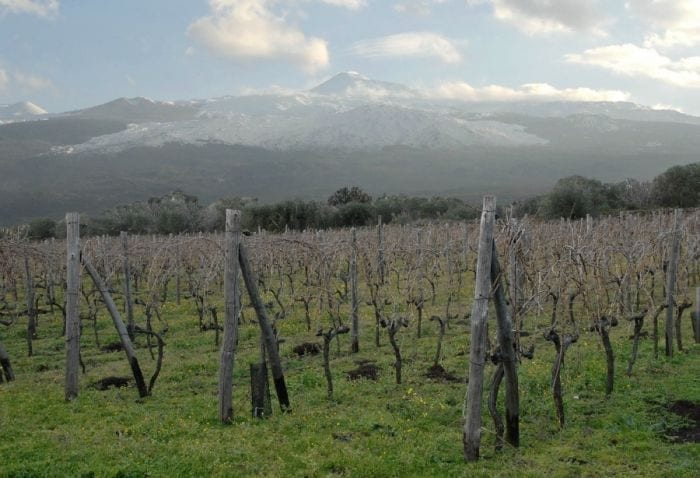

 This is how the name Nutella was born: the story by Maria Franca Fissolo Ferrero, wife of the inventor
This is how the name Nutella was born: the story by Maria Franca Fissolo Ferrero, wife of the inventor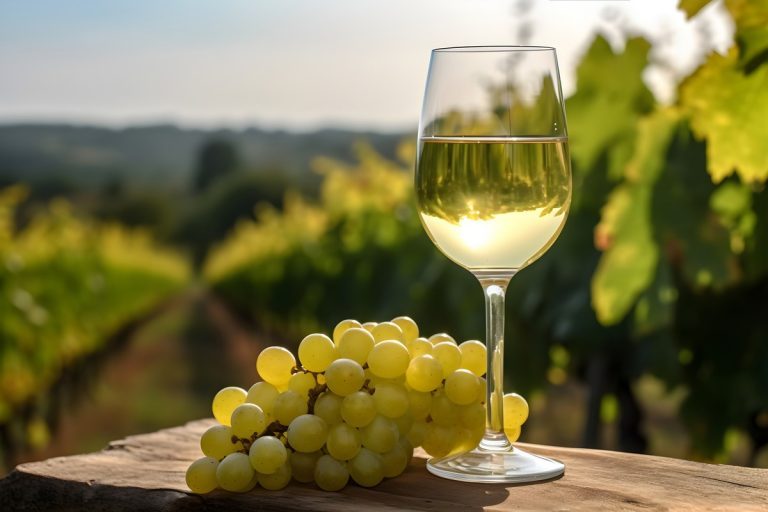 A Riesling from Oltrepò Pavese is the best quality-price ratio wine in Lombardy according to Gambero Rosso
A Riesling from Oltrepò Pavese is the best quality-price ratio wine in Lombardy according to Gambero Rosso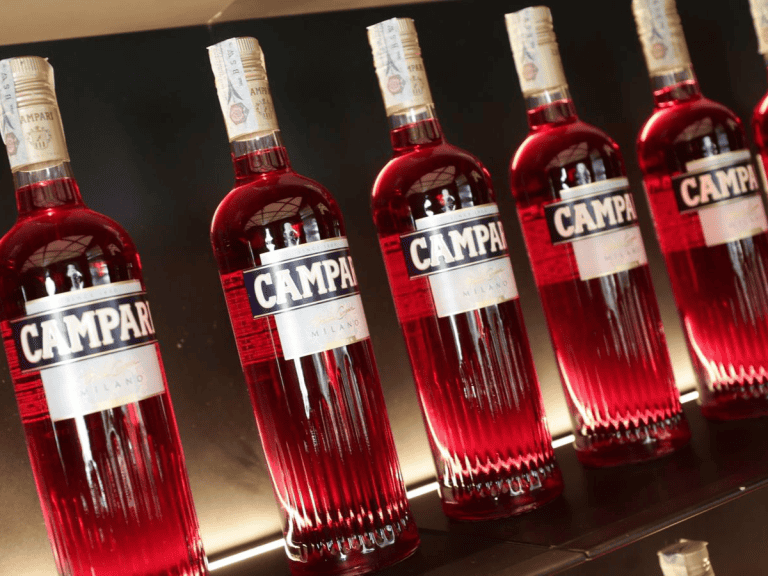 "The Campari recipe? It's a secret, only five people know it." Journey into the factory of the world's most famous red
"The Campari recipe? It's a secret, only five people know it." Journey into the factory of the world's most famous red 57 million bikers on vacation on farms, the Cycling Federation and Agriturist focus on cycle tourism
57 million bikers on vacation on farms, the Cycling Federation and Agriturist focus on cycle tourism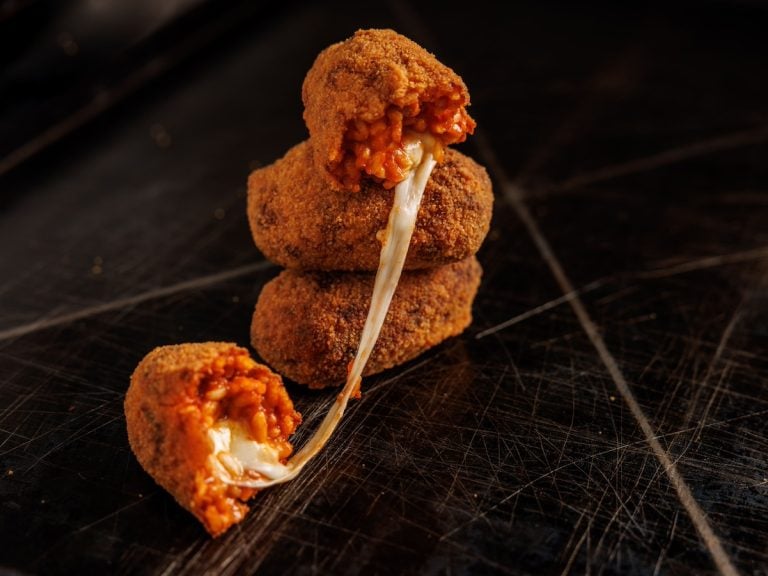 A new era for Casa del Supplì: opens a new location and considers franchising
A new era for Casa del Supplì: opens a new location and considers franchising
